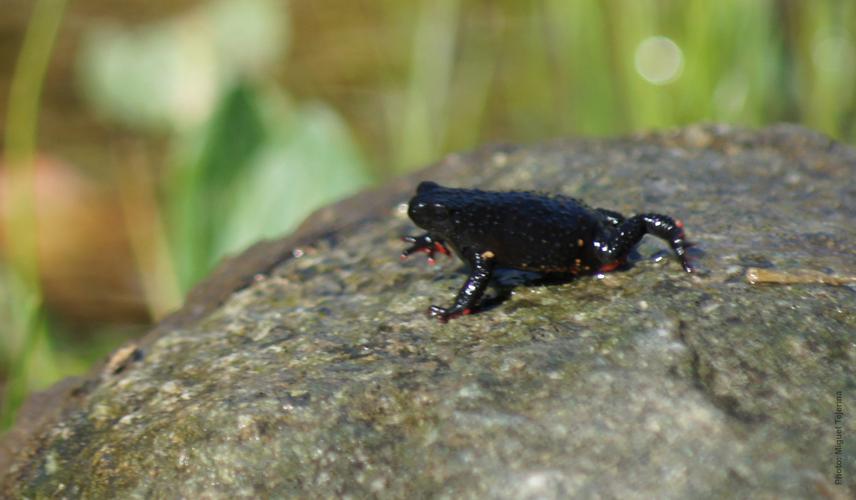Agustina Cortelezzi
Other projects
29 Jun 2012
Conservation Status Assessment of the Endemic Tandilean Red-Belly Toad - Phase I
Promote Tandilean Red-belly Toad as flagship species of highland grasslands, define the distribution range and population size, create non-invasive techniques of study and monitor the presence of chytridiomicosis.

Red belly toad. ©Miguel Tejerina
The pampa in Argentina is one of the few grassland ecosystems present in wet temperature areas worldwide. This ecosystem was severely transformed by agriculture and cattle breeding. The pampa eco-region status is endangered and of maximum priority due to its great transformation, biological uniqueness, and the absence of protected areas. Besides the Tandilia mountain system holds remnants of pampa grassland, those remnants show a high level of fragmentation and a low connectivity. The Tandilean Red-belly Toad (Melanophryniscus sp.), an endemic species restricted to Tandil hills in Buenos Aires Province, is another case of amphibians decline in South America. The conservation status of this species has not been assessed as a result of the species has not been described yet. During our first RSG we identified threats and we confirmed it extinction in some remnant grasslands. Our objectives in this new phase are: promote Tandilean Red-belly Toad as flagship species of highland grasslands and encourage grassland conservation in private remnants; generate a non-invasive marking tool to conducted population studies; delimit the distribution range, estimate the population size, and define main variables affecting occupancy; monitor the presence of chytridiomicosis; and solve the taxonomic conflict.
With this work we will develop a set of concrete actions to promote the viability of this toad species and the conservation of relict fragments of Argentine Pampas. We hope to encourage a change on the local community vision about the importance of conserve the native highland grasslands as refuge for endemic species. During the project implementation, we will keep training Argentinean students on different field techniques and encourage them to pursue a career in conservation biology. Moreover, we will develop some educational efforts addressed to both tourists and local inhabitants. All the information gathered by the conservation project will be continuously updated in social networks (i.e. Facebook and twitter).This will allow us to allocate conservation effort in a more efficiently way.